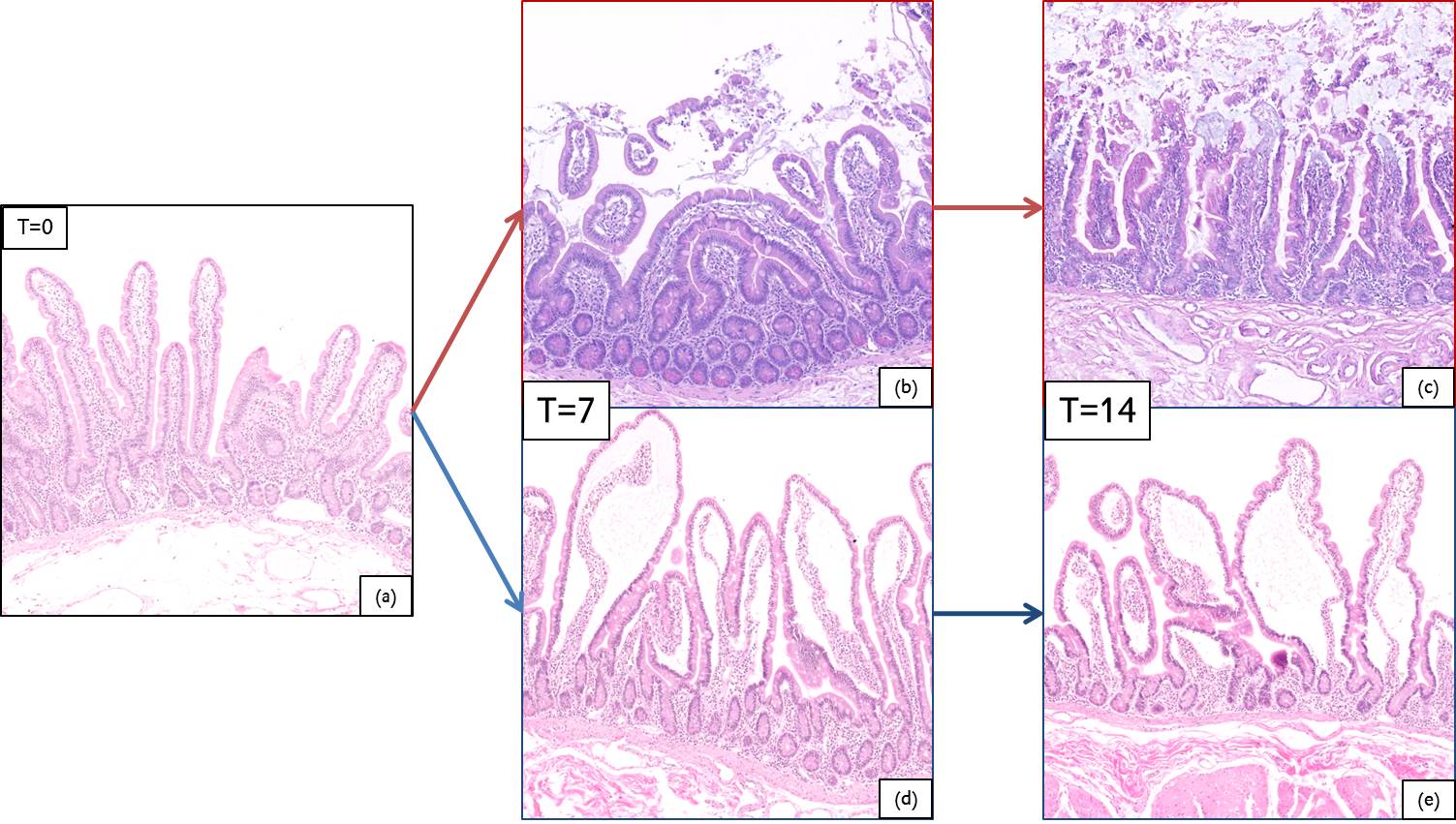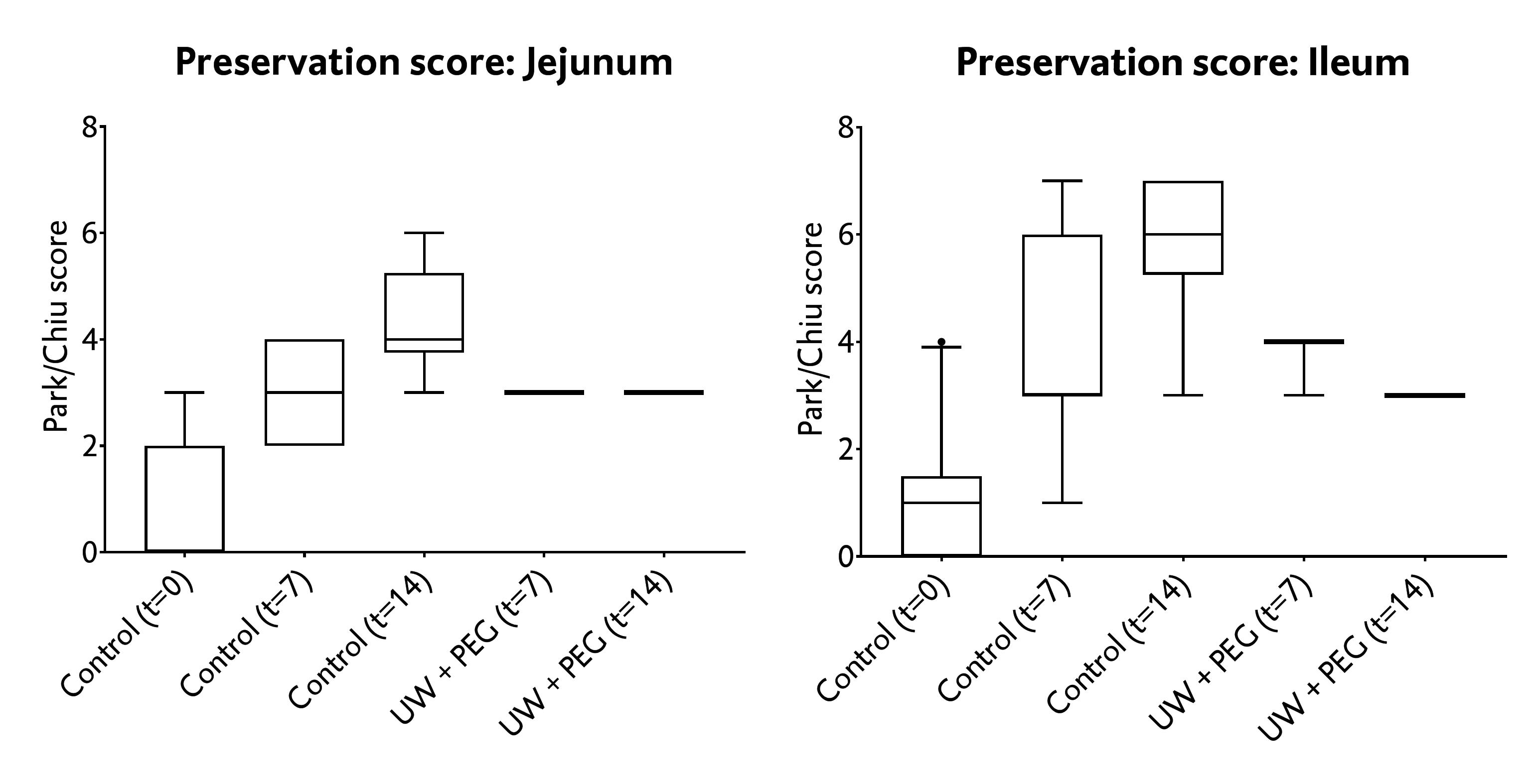Introduction: Graft survival rates in intestinal transplantation (ITx) are the lowest among solid organ transplantation. Unique for ITx is the presence of metabolically-active luminal content consisting of microbes, dietary and waste products. Ischemic damage during cold storage decreases mucosal integrity, which contributes to graft rejection and infections. Cold storage of the bowel is limited to 10 hours, after which it is deemed unsuitable for transplantation. Luminal preservation (LP) with polyethylene glycol (PEG) has shown promising effects in improving graft-viability in experimental animal models. The ITx centres in The Netherlands and Belgium joined forces with the aim to analyse the effect of LP on graft viability.
Methods: A prospective study was set up with 4 study groups:
- Control: University of Wisconsin solution (UW) for vascular perfusion (VP) only
- VP + LP: UW+PEG
- Institut Georges Lopez-1 solution (IGL-1) for VP only
- VP + LP: IGL-1+PEG
Inclusion criteria follows recommendations from the Organ Procurement and Transplantation Network for ITx, with extended age to 70 years (due to donor shortage) and no anthropomorphic features taken into account. Donors underwent standard dissection for organ procurement. If LP was included, the intestine was perfused with PEG (6.4% w/v) through the nasogastric tube. Samples were taken at 0, 7 and 14 hours after start of preservation. Analyses include histology (Park/Chiu preservation score), and further studies on gene and protein expression, and bacterial localisation and composition.
Results: So far, 9 bowels were included. In Dutch cases (N=7), 4 grafts received VP-only and 3 grafts received LP. In Belgium, 2 VP-only experiments were performed so far.
VP-only samples show decay of the intestinal microscopic structure over time with necrosis of villi tips and mucosal disintegration (Figure 1 a, b, c). LP samples show a conserved epithelial lining up to 14 hours of cold storage, with increasing signs of subepithelial oedema (Figure 1 a, d, e). Preservation scores reflect these findings (Figure 2).


Conclusion: These preliminary data suggest that LP with PEG reduces preservation injury in intestinal grafts. LP might thus improve graft viability and increase its preservation time-window. Different LP solutions are being tested and further analyses are underway to address barrier function and the cause of the subepithelial oedema.
.jpg )